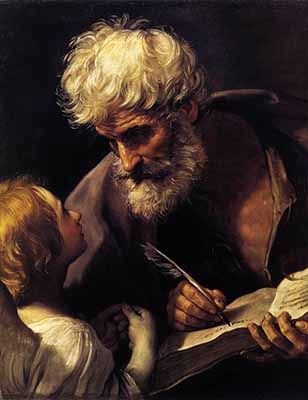 There is an old cartoon that shows Jesus delivering the Sermon on the Mount. In the picture, Jesus says to his followers ‘I want you all to listen very carefully. I don’t want to end up with four versions of this.’
There is an old cartoon that shows Jesus delivering the Sermon on the Mount. In the picture, Jesus says to his followers ‘I want you all to listen very carefully. I don’t want to end up with four versions of this.’
It is terrific that we do have four versions, each of the four Gospels telling the same story with different emphases and nuances. Matthew’s Gospel, which is our liturgical companion once again this year, has always had a special place in my spiritual journey.
GOSPEL OF WONDER
For me it is the Gospel of wonder and surprise. This starts with the story of the magi, wise people who had learned a lot from books. They follow a star and suddenly their world is turned upside down. They encounter deep darkness in the fearful insecurity of Herod and unspeakable light in a powerless baby.
The Gospel ends in the same way. An angel with a face ‘like lightning’ tells the women at the tomb that they have no need to be afraid because Jesus is alive. In contrast, those in power try to control the narrative (to use a modern expression) by bribing the guards and spreading a story that Jesus’ body has been stolen. Time and again, Matthew presents us with a choice. We can be closed and defensive like Herod and the chief priests and various others. Or we can be open to the wonder of God’s grace. Matthew’s Gospel even expresses compassion for Judas Iscariot. It mourns the fact that, even after what he did, he could not see the creative possibilities of God’s love. He was so self-absorbed that he could see only darkness.
KINGDOM OF GOD
Matthew’s Gospel frequently uses an expression which we don’t find in the other three. This is the phrase ‘the kingdom of God’ or ‘kingdom of heaven.’ Matthew loves it. The image of a kingdom is central to many of the parables that only occur in Matthew’s Gospel. We learn that the kingdom of God is like a field sown with weeds (13: 24-30) or a big net that brings in all kinds of things (13: 47-50). It is like a treasure hidden in a field or a pearl of great price (13: 46-50).
All these colourful images make us think about a search. The kingdom of God is found among all the confusion of life, like wheat among weeds or a net that brings in rubbish as well as fish. It asks us to keep our eyes open, to make an effort to see the world as God sees it.
One of the great themes of Matthew’s Gospel is ‘stay awake’ or ‘pay attention.’ You might recall, for example, the story of the wise and foolish virgins. Some were prepared for the unexpected and some were not. Likewise, the famous story of the Last Judgment in chapter 25 where the Son of Man sits on a throne, very much like a king. People are sorted on the basis of who did or did not notice that Jesus was present among them as the hungry, the thirsty, the strangers, the naked, the sick and the imprisoned. Those who refused to see and respond have no chance of seeing God. It is no surprise that this story follows another that is unique to Matthew: the story of a person who was unable to use the gifts entrusted to them to do something positive. These two stories of worldly blindness provide a prelude to Matthew’s Passion story.
MATTHEW AT WORK
There is a marvellous image of Matthew at work, painted by the Renaissance Italian artist Guido Reni (1575-1642). Reni was a career artist who created many conventional works. But St Matthew and the Angel (1602) is special and clearly influenced Rembrandt’s better-known image of St Matthew. Often enough, Matthew is portrayed as Levi, the tax collector who was released from an appalling job. But Reni shows a listener. This Matthew is deeply attentive, waiting on every breath of inspiration. Furthermore, the angel is not up in the sky or sitting on a cloud. Matthew looks down to find the angel, towards the earth which they share. This angel speaks from reality. Matthew is captivated and enthralled. He is certainly awake.
Matthew was a traditionalist in one sense. He quotes the Hebrew scriptures far more than any other evangelist. He softens the invective of other Gospels against the Pharisees. The genealogy with which he begins has a rich sense of history, albeit with plenty of surprises, especially in the role of women. The scripture scholar, Brendan Byrne, has pointed out that Matthew turns this tradition around so that it becomes more ‘burden lifting’ than ‘burden imposing’.
Matthew is keen for us to understand that the kingdom of God is new and fresh and even unpredictable.
Jesus last words are ‘know that I am with you always; yes, to the end of time.’ In other words, there is plenty more in store. We just have to be open enough to notice.